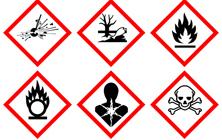Japan seeks new label/SDS risk assessment rules on ten substances
Substances, including asphalt and boric acid, will require labelling, SDS and risk assessment
18 May 2017 / ISHL, Japan
Japan’s Ministry of Health, Labour and Welfare (MHLW) has notified the World Trade Organization that it intends to introduce obligations on 'business operators' for the labelling, safety data sheets and risk assessment of ten substances, plus preparations containing them.
WTO members have until 15 June to submit any comments.
The substances are:
1-chloro-2-propanol;
2-chloropropan-1-ol, also known as 2-chloro-1-propanol;
terbufos, also known as S-tert-butylthiomethyl O,O-diethylphosphorodithioate;
boric acid;
diacetyl, also known as butanedione or 2,3-butanedione;
carbonyl sulfide;
tert-amyl methyl ether, also known as TAME or 2-methoxy-2-methylbutane;
phenyl isocyanate, also known as benzene or isocyanate; and
portland cement
Last year, a committee under the ministry made a recommendation to add them to the appended table 9 of the enforcement order of the Industrial Safety and Health Act (ISHA).
Substances listed in the table are subject to the labelling, SDS and risk assessment provisions of Articles 57(1), 57(2) and 57(3) of the Act.
New rules will be introduced through amendments to the Enforcement Order of the ISHA.
The amended Order is due to be adopted in July and to take effect 12 months later in July 2018.


